The High Cost of Broadband for USO Excluded UK Communities

However not every community is going to be as willing to challenge such quotes as others and, when acting as an individual, it can clearly be extremely difficult to know whether or not you’re being treated fairly by BT. On this point there’s a notable lack of knowledgeable independent oversight (this too would be difficult since assessing whether a quote is fair or accurate can be tricky without engineers on the ground).
In fairness this is difficult for BT too and they’re still learning. Communities change over time and Openreach’s internal data isn’t always as accurate or detailed as we’d like. On top of that the USO was introduced just as the COVID-19 crisis was really starting to kick off, which created an additional headache due to limited resources (although they did have a year to prepare for it beforehand).
On the other hand, it’s not like BT’s quotes are all falling massively outside of the ball park (excluding a few extreme examples), as we can see when comparing against some of the other non-BT examples. Furthermore, it’s worth remembering that BT and KCOM were the only ones out of an entire industry that were willing to take on the high costs and legal responsibility of delivering the USO.
At this point we should mention that BT contribute toward funding the USO themselves, but Ofcom can establish a Universal Service Fund (USF) with the wider industry if they “find that there is an unfair net cost burden” being imposed on BT or KCOM due to its delivery (i.e. compensation for the USO operators). So far this hasn’t happened but, given the above quotes, we suspect there may be an argument for establishing the USF. “For the fund to be triggered, BT will need to submit detailed costs demonstrating the net burden of delivering the USO,” said the operator’s July 2020 financial results.
What do the regulator and BT say?
We raised some of the key points from our investigation above with Ofcom and BT. In response a spokesperson for the regulator told ISPreview.co.uk that they were “concerned about the high amounts BT has quoted some people … particularly where connection costs could be split across a number of homes in an area. We’ve raised this with BT as a matter of urgency and expect it to take action.”
Ofcom added that, under the USO, BT are required to take due account of the extent to which costs may be shared by multiple locations (i.e. demand aggregation). However, as we’ve seen above, the quotes don’t always seem to make much sense and end up causing confusion (e.g. one moment it’s £30k, but for others in the same area it’s £12k and in some cases this has later become free etc.).
The regulator clarified that, “while each quote has to be sent to – and paid for by – an individual rather than a collective, BT’s costs (whether above or below £3,400) should be calculated and shared according to the demand aggregation model (which effectively assumes that sharing will take place), rather than lumping all shared costs into individual quotes.”
A BT Spokesperson said:
“The common theme in these cases appears to be driven by the fact that the current USO process seeks to maximise the efficiency of USO build by “clustering” potential USO customers onto a single fibre splitter where possible. Therefore when we receive a single request for USO we will seek to build a splitter based FTTP solution that addresses that customer and other USO customers in the same area.
We will contribute the USO funding threshold of £3400 to the costs for each potential USO customer addressed (subject to an Ofcom agreed take up assumption of 70%) in order to calculate the excess cost over and above the USO contributions, and that total excess cost bill will be presented to the customer who requests the service, and similarly other customers on the same cluster will receive an equivalent bill until it is accepted by one of them.
Once a customer accepts the bill then the structure is built and all users on that structure benefit with no additional build cost. Therefore in the first case of multiple similar but different quotes in Pandy this appears to be customers on multiple clusters receiving quotes to build their particular cluster, and in the case of the Brentor case the cost of the cluster build (once USO contributions have been deducted) would be £42,00 and once this is paid the structure would be built and all customers on the structure receive the benefit at no additional cost.
We are also looking at alternative approaches to sharing these excess costs amongst more of the potential beneficiaries rather than just the requesting customer with Ofcom, however the USO process isn’t currently set up to accommodate this type of request but we are working with Ofcom to find a solution where it can be possible but without the risk of BT incurring costs which it cannot recover.”
BT also pointed out that Openreach had recently improved their costing model for the USO and as a result of that they have been able to lower the cost to some customers who received quotes under the old model. “This has been achieved by sharing build costs across more premises than we initially thought. This meant that the revised quotes were much lower and in some cases, as you highlight here, were actually free,” said BT (all affected customers are said to have been contacted directly about this).
Moving on to the subject of complaints (ADR) about the USO process, Ofcom noted that the ombudsman “can only rule on whether BT have followed the proper process when providing their quote” and will not be carrying out their own costing exercise to independently verify it. BT also clarified why they had attempted to reject some complaints.
A BT Spokesperson said:
“We became aware of a number of instances of this type of issue, on investigation they appear to have been caused by customer enquiries being handled by the normal BT Consumer teams rather than the dedicated USO teams. Our normal BT Consumer team process requires a BT customer account in order to progress.
This resulted in some failures as you have highlighted here. We have made changes to the process to direct USO issues to a dedicated USO complaint route that should have now resolved these issues.”
As for the issue of who pays, such as when somebody agrees to proceed (i.e. pay the proposed excess costs in the quote) and then the final price increases again, the regulator’s view is that “if the customer does not want to do this, BT can remove eligibility” (i.e. you may walk away with nothing but also no surprise bill to pay). Generally, Ofcom said that BT should deliver the build based on the agreed excess costs.
Ofcom’s spokesperson concluded:
“We’re continuously monitoring how the USO is going, to make sure it’s delivering the desired benefits for customers. As mentioned above, we’re concerned about the information some people are receiving, which we’ve raised with BT.”
We also raised this same issues with BT.
A BT Spokesperson said:
“This “cost of building may increase” letter should only have been sent to customers who were below the USO cost threshold and thus were eligible to receive the USO build without incurring additional costs. In that case though there is a risk that actual cost, when we come to build the solution are more than the USO threshold. In that case, we will seek to continue to build up to a cost of double the USO threshold (i.e. £6,800) at our expense.
However in the event of unforeseen costs beyond that we would then go back to the customer and offer them the option of paying the additional cost or halting the build at no charge to them.”
Finally, we asked BT why their quotes failed to name the broadband technology that would be delivered (FTTC or FTTP etc.). A spokesperson for the operator said, “Generally this will be via FTTP, however the USO regulations require us to build the most efficient solution that delivers the USO … In some cases the USO specification may be achievable via other technologies such as an FTTC solution. As a result when we build new fixed infrastructure for USO we cannot guarantee that it will be FTTP, though in practice we expect it will be in most cases.”
As much as we agree with BT’s viewpoint on this, it still doesn’t entirely explain why the operator can’t include this information on their quotes. After all, by the time a quote has been issued then the operator must have already know what technology is best to use.
Conclusion
Overall it’s hard not to see the USO as being a bit of a disappointment, which is partly down to its minimum speed (note – a faster speed would have created various complications with competition, high cost and potential delivery delays), and the fact that Ofcom allowed the use of highly variable 4G mobile technology alongside fixed fibre-based methods. Making the USO faster also wouldn’t solve the existing issues with delivery (if anything, they’d get harder).
The fact that the Government kept promoting the USO as a solution for everybody – those missed out by their other superfast and gigabit broadband programmes – certainly hasn’t helped. In fact, neither does that word “universal,” which in both cases served to create an unrealistic expectation of faster broadband speeds at no extra cost for all of the hardest to reach locations; even though it clearly can’t deliver this for everybody.
One final point to make is that, if anything, the USO situation is helping to demonstrate just how expensive it really is to connect-up those who fall outside of the cost threshold and also how difficult it is to accurately cost such work. Even if we correct for some of the issues with BT’s quotes, such work will still be incredibly expensive to complete via fixed lines in remote areas, which is an unavoidable reality.
As it stands the UK Government has stipulated in its legislation (Digital Economy Act 2017) that the definition of the USO speed should be reviewed when at least 75% of premises in the UK subscribe to a broadband service that provides a download speed of at least 30Mbps. Last year’s Connected Nations 2019 report put this figure at 59% (i.e. we don’t think it’ll hit 75% this year, but we’re getting much closer).
Going forward it’s hoped that the Government’s plan to invest £5bn to help get those in the final 20% of UK premises hooked-up to a gigabit-capable broadband service (here) will also help to tackle some of the aforementioned areas. Meanwhile Scotland’s R100 programme (here), the Welsh Government’s Phase 2 deployment (here) and Northern Ireland’s Project Stratum (here) should also help.
Remember, if BT or KCOM decide you are not eligible for the USO, they should tell you about your right to challenge this decision and they should also tell you how you can complain (even though complaining might not make much of a difference).
Ofcom Statement on USO Complaints
Customers have free access to alternative dispute resolution schemes. They will help resolve your issue if the complaint remains unresolved after 8 weeks, or sooner if deadlock has been reached with BT or KCOM. You do not need to be an existing customer of BT or KCOM to dispute an eligibility decision.
Although Ofcom does not investigate individual complaints your help in highlighting problems plays a vital part in our work.
You can complain to Ofcom on our website, or by calling us on 0300 123 3333 or 020 7981 3040.
If you wish to speak to us in Welsh, please contact our Welsh language line on 0300 123 2023.
Mark is a professional technology writer, IT consultant and computer engineer from Dorset (England), he also founded ISPreview in 1999 and enjoys analysing the latest telecoms and broadband developments. Find me on X (Twitter), Mastodon, Facebook and Linkedin.
« Voneus CEO on the “unrealistic” 2025 UK Gigabit Broadband Target
Full Fibre UK ISP Hyperoptic Reintroduce Cheaper 30Mbps Plan »
Latest UK ISP News
- FTTP (5516)
- BT (3514)
- Politics (2538)
- Openreach (2297)
- Business (2262)
- Building Digital UK (2245)
- FTTC (2044)
- Mobile Broadband (1973)
- Statistics (1788)
- 4G (1664)
- Virgin Media (1619)
- Ofcom Regulation (1461)
- Fibre Optic (1395)
- Wireless Internet (1389)
- FTTH (1381)








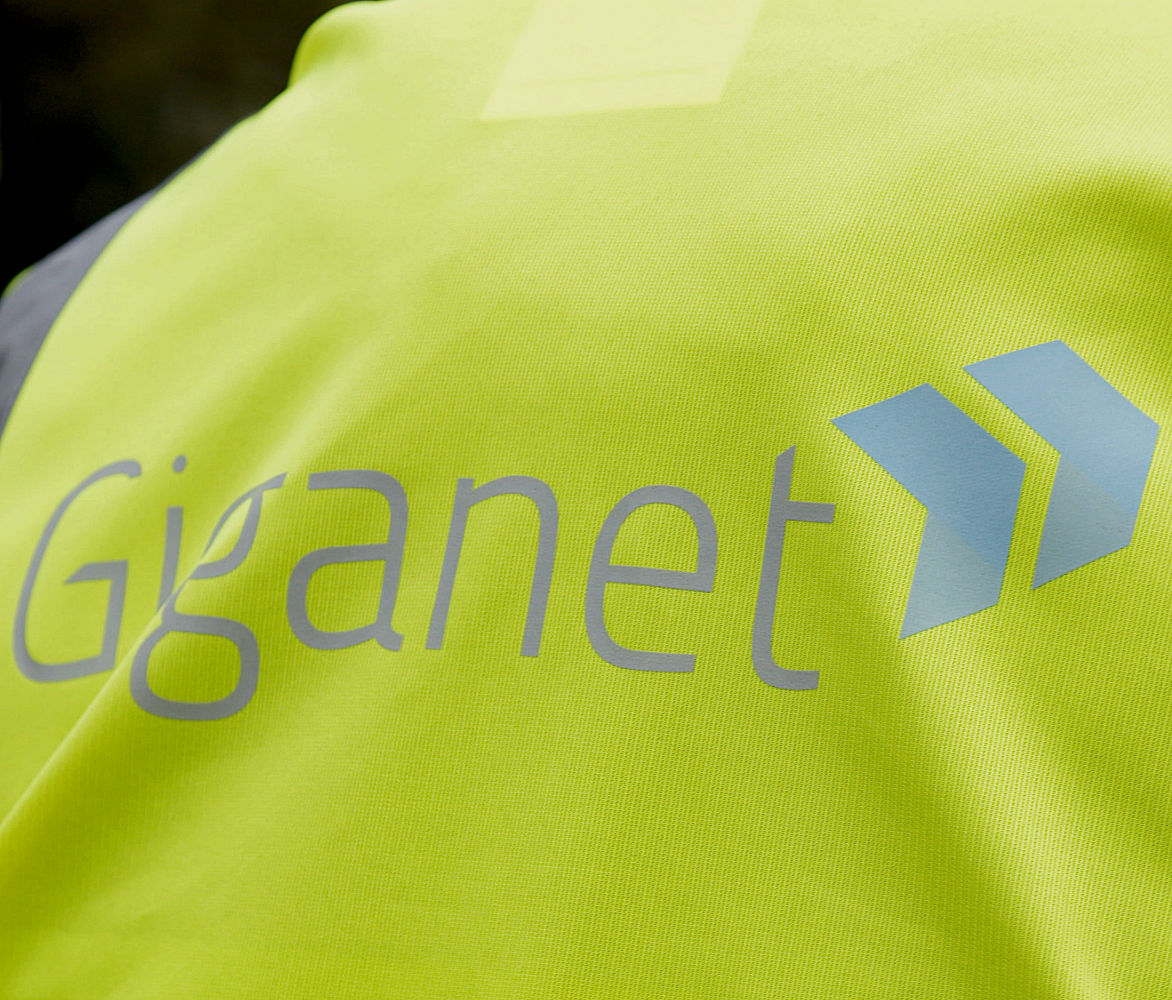

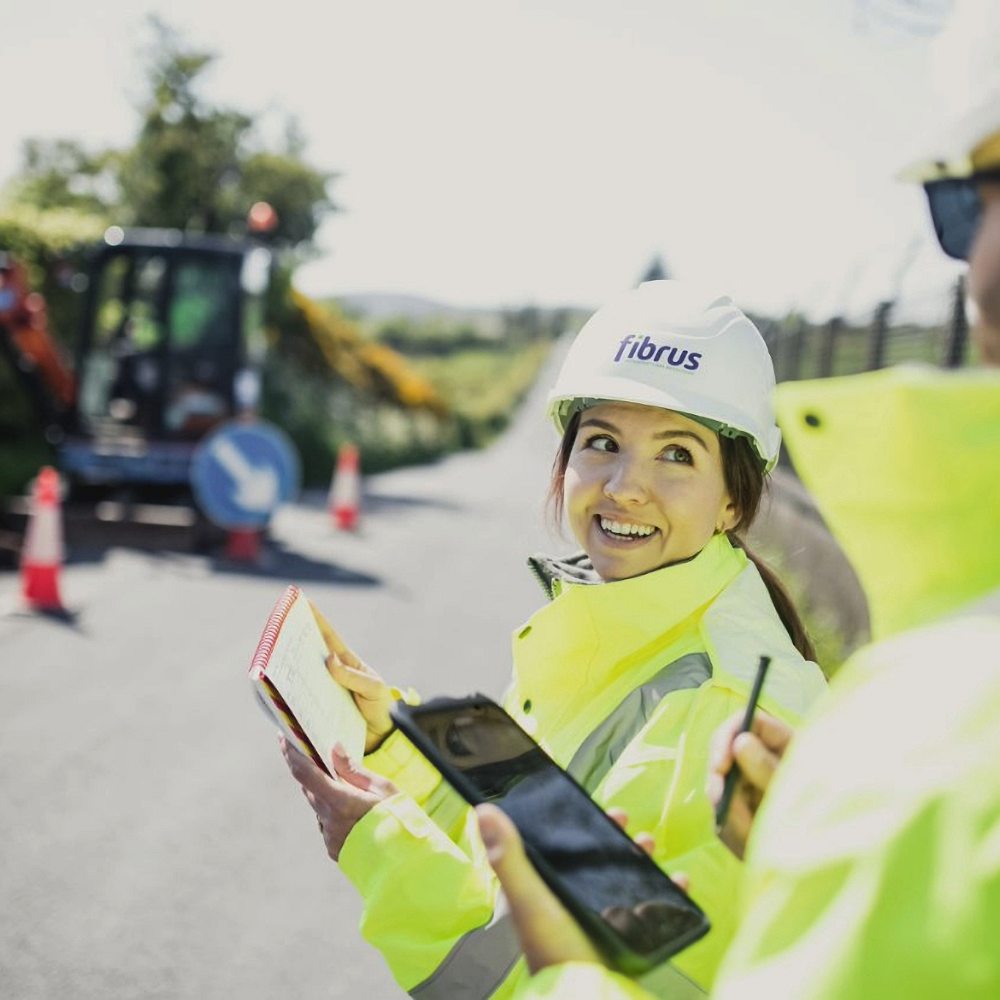












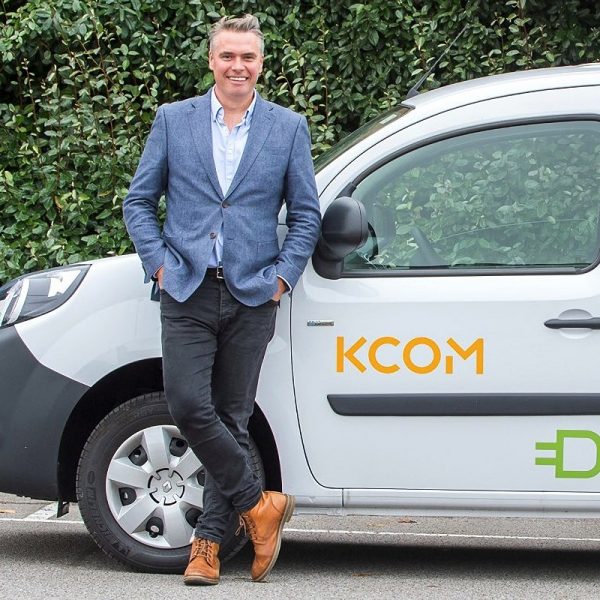
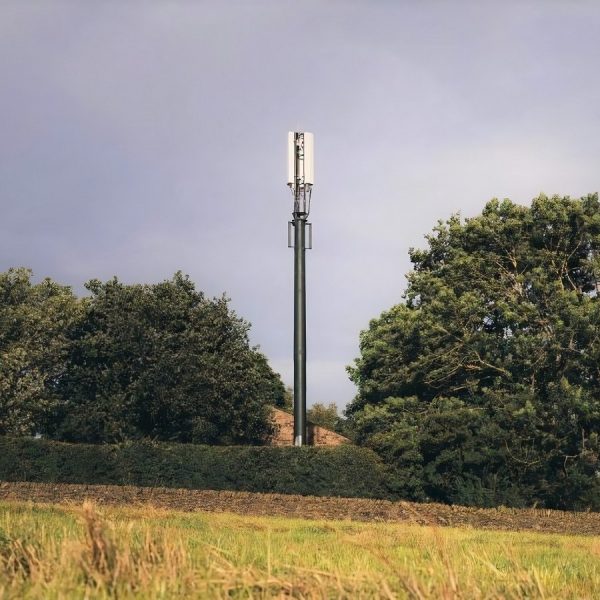
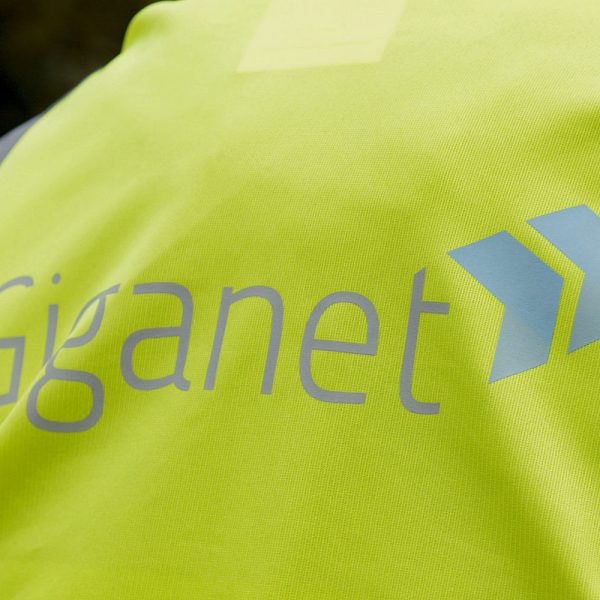



































USO has been similarly disappointing for us with BT coming back to us with:
Once again, I’m sorry that it took several months for us to get back to you with an estimate. This is longer than we expect.
Your premises is eligible for a USO network build, but unfortunately Openreach have let us know that they can’t complete this under our cost threshold.
It’s estimated that there would be between £80,000 and £90,000 plus VAT for you to pay, if you had decided to go ahead.
This work would take around 18 months.
Guess we’ll try to find a more stable 4G solution as Three’s 4G router is extremely unreliable for us and we’re not even in that rural of an area…
In our village new build houses have been mailed with the USO letter when actually they are covered by SuperfastEssex, or Openreach have plans for commercial coverage via FTTC.
I do not know how many residents have requested (and paid for) a needless survey – some certainly – but the quotes I was shown (in semi-rural Essex where a rival already has a network) were steep.
Looks to me another example of BT trying it on, to see if they can grab some USO funds when there’s already a plan for coverage.
I’d recommend to anyone who has received a USO letter to check with their BDUK project whether there are actually coverage plans, before going any further with USO.
be very surprised if there was any more FTTC being built (planned and built completely different
they might be covered by FTTC in the village but was that postcode shown (and is the new build a new postcode that not covered (and does that development actually get any uplift ie up to 10 meg
the fact that this has taken more time that expected suggests that the plan you refer to is now not happening or has been superceded by something else or someone else and therefore is not part of the intervention area (being delivered by Openreach) any more
suggest you check that with superfast essex but as an aside aside you would expect someone to check first if they are covered by any government plan before asking for USO
Looks to me another example of BT trying it on, to see if they can grab some USO funds – hilarious (this one) you clearly do not understand the make up of USO)
Never mind USO being expensive for some to get 10mb, The entire broadband industry’s offering of 100mb is too expensive for most people!
The way broadband is now at the point where you have to lock yourself into a contract for up to 2 years just to get a half decent monthly premium, then you have to just expect a double price increases after that time or find an alternative.
Its becoming the new car insurance model but without a no claims bonus. Home broadband shouldn’t get more expensive year on year but it is. Maybe if broadband companies were putting profits back into their respective companies it would be getting cheaper?
The entire way that broadband is charged to home customers in the UK is broken.
Our speed tier pricing has little to do with the costs of the bandwidth, they’re numbers set at price points for either profit or competition for subscribers. Its just the same as the quote attributed to Ford motors ( IDK if its true) about why UK pricing was so much more than other countries where the quoted response was “Because that’s what they will pay”.
The per Gb cost for data is tiny in physical transmission terms, I’d not realised how complicated this can get in reality, but there’s an excellent article from cloudflare where they try and explain, Allegedly Europe is one of the cheaper regions.
There are providers who don’t lock you in to anything beyond 1 month.
IDNet for one, if you go for a provider using Openreach for the final mile.
Or, say, Jurassic Fibre for a new-build FTTP provider (OK, limited coverage so far – but it shows 24-month commitments aren’t everywhere).
“Profit” – you have seen the cash burn needed to build a new network? Any sensible ROI is over a 30+ year timeframe.
Fantastic article Mark, thanks for all the effort pulling this together.
Right from the start of the USO the farcical “legal right to request” element paved the way, We already had a legal right to request a service from OR or any of the other providers, Then as now they also had the right to refuse that request, Albeit now they have to provide a reason (cost usually) and offer you the chance to foot the bill.
And this from Mark really highlights the pitiful state of the process…
“After all, by the time a quote has been issued then the operator must have already know what technology is best to use.”
Yes they may well run into problems that were not planned and costed in the quote but to be unable specify what the quote is to provide is a total joke. It’s at best an estimation and even then a vague one, but the 10Mbps+ capable element of the USO allowed for this.
No doubt things will change slowly and over time it will get clearer as it already seems to be doing. But the seemingly random number generator for costs just carries on from FTTPod and the inclusion or exclusion of properties from plans sometimes looks like they threw a dart at a map and picked a random number.
Thank goodness for community dug and installed Gigabit FTTP broadband. Most rural communities are better off being self sufficient and doing their own FTTP project.
who says you have to do that with Gigaclear – there are a number of operators doing that . actually openreach have been doing with communities for a number of years –
@fastman, David didn’t say Gigaclear
It sounds like a real mess. USO, R100, Voucher Schemes, CFP, Dig your own!
I live in a rural area of Scotland. Surrounding villages got FTTC but BT wouldn’t run it the extra 4 miles to our community. We suffered in silence, at times literally, with ADSL.
Then without us asking, Openreach started running FTTP through our community. This immediately raised a question in my mind about install costs, because whereas we all have bits of copper running to our houses we don’t have fibre.
Fortunately for me the install cost was zero since the box in the road was outside my house and Openreach only needed to about 50m of ducting and fibre. However, a good many of my neighbours are facing bills of several hundred to several thousands of pounds for the final connection. Naturally many of them have declined – its not as if we all need faster BB, but just a more reliable and consistent connection.
All the headlines saying how good the deployment rate is in rural areas should be qualified by the actual take up rate
The answer is in the statement “The common theme in these cases appears to be driven by the fact that the current USO process seeks to maximise the efficiency of USO build by “clustering” potential USO customers onto a single fibre splitter where possible. Therefore when we receive a single request for USO we will seek to build a splitter based FTTP solution that addresses that customer and other USO customers in the same area”.
Public awareness of USO is still very low and if BT are making assessments and spending hours providing quotes on what is drifting sand thats the issue.
My view is that we should by now be able to identify using existing data by each UK residence what speed they are currently achieving and what options are currently available to them.
The BDUK, WG etc should public clear plans, not by area, not by post code but by premises.
Network providers annoucing implementations within the next 12 months should also provide clear plans, not vague proposals, not by area, not by post code but by premise.
Ofcom should also review 4G coverage maps/capacity with the mobile providers as they are inaccurate.
Data is the key here as we should be able to identify all the USO premises not just those that request it. This would mean BT’s assessments/planning would be more efficient and the cost per premise hopefully reduced avoiding rework later. It should also avoid first on the block pays.
BT was the only provider to take up the USO obligation so they should have the first bite but if they cannot provide a FTTP solution to the above identified premises by the end of 2021 (commitment now) then it should be open to the smaller Altnets to bid for them and be granted funds (from vouchers or other).
The USO is supposed to provide a socially inclusive and effective broadband to all UK citizens. This needs to be done front loaded by the end of next year and in parallel to the sprouting fibre aspirations being developed by committee.
Currently the USO is failing to provide what was intended, wasting valuable time/resource and increasing the haves and have not divide in rural communities.
How about nationalizing BT, that’d solve the issue really nicely! 🙂
@Buggerlugz
Only as a plan to set the process back years
I would certainly agree that better modelling will help with understanding the costs distribution better.
For many years OR resisted publishing line length and performance data and now this is certainly extant.
The issue is how do you relate line length to build cost: unless you simply overlay copper with fibre you can’t. OK this might give a first approximation: but it will be on the high side.
In the alternative you produce the purists, fresh dig, FTTP solution ignoring the existing network layouts – that doesn’t work as you end up with a massive and off putting bill.
The question I would pose is “how do you end up with a pragmatic but generalised network layout, defined by a few basic parameters?” Honestly, I’m not sure you can.
Then on top of that you have the very isolated premises that are effectively very long single fibres back to the node.
All that said, the lack of information does make it far harder to understand the totality of the obstacles, financial and otherwise, faced.
This is missing several elephants. 1.) There is no industry fund to operate the USO so BT is inclined to quote >£3,400 for any USO quotes unless it 4G. 2) There is the £788m capital Deferral in BT’s accounts which should be used to contract the remaining 600k premises in England and 3) there is as yet no public record of a uniform BT capital contribution to allowable costs for all the BDUK projects. The latter needs to be extended to the community partnerships.
Its a great article Mark and accurately reflects what I’m hearing on the ground here in rural Devon. Let’s just hope a few people from OFCOM and government read it and start taking some action against BT Group. As usual BT is putting far more effort into gaming the system for financial reward than delivering the public service the law requires them to.
@GC – which law requires them to deliver a public service when there are many companies with code powers?
Or do you mean the USO, what does the small print say?
Really
So how many patents offered to bid on uso went through formal.tendering process to be a uso provider
Answer none of them because it’s hard and horrible and anyone under 3400 gets resolved
Si a shed load of work for little or no reward
TheFacts: Why are you so keen on defending BT here again? Clearly customers are being let down here with the lack of proper telecom services, the USO has flaws here. This country is hopelessly backwards with regards to fibre telecom services, and BT has been a longstanding tragedy here in the past!
I requested information from the 4 companies listed that cover my rural area, all 4 came back and said they dont cover the area. BT offered a leased line for £600 a month. Pretty pointless giving a legal right to something that has no enforcement ADSL is 0.5mbs well under anything useful and would cost in excess of £30/ month so a double rip off. I cancelled long ago and use a 4G router from three which is getting worse and worse especially if the router connects to the stronger B20 800 frequency which throughputs at 2mbs and I have to keep disabling it with software on an android tablet. The whole thing is a total mess.
You can use LTEHMonitor on your pc to set your router to ignore band 20 and specify bands 1 and/or 3
I dont understand why Openreach do not permit ISPs to order bonding on their ADSL lines for those who are not getting USO speeds. This ought to be at no cost to the user. By combining two lines would double the speeds the user is currently experiencing. That would be a stop gap until some iteration of fibre is installed for residents without high speed connections.
Its a pretty useless solution.
Finite numbers of lines, crosstalk and anything up to 20% loss of capacity/per line. If you’re well sub 10 you’re prob not going to reach USO anyway.
And for all this additional cost to the ISP you want them to provide it subsidised….!
I live on a new build development that sits 4 miles from the centre of Birmingham. The site is 5 years old and surrounded by roads who can access Virgin media and FTTC from Openreach. We just missed out on Fibre due to the timing of the original planning application and so the only broadband we can get is traditional ADSL which runs at around 1.5mbps. Our estate, which sits in the middle of a densely populated urban area of Birmingham has Fibre capable ducting in place and is connected to an old non fibre exchange just shy of 2 miles away. We have been quoted £260,000 for a community funded fibre solution for a development of 200 houses, so well over £1000 per property; a compete non starter. BT can only offer a 4G option which most houses now use under USO. 4G isn’t really good enough as a full home broadband solution, it drops in and out and connection speeds are very variable. We have campaigned to our MP, local councillors, Virgin and Openreach and hit brick wall after brick wall. Can anyone offer any advice?
So how many premises did you ask for in your quote all of them in the development or just a few premises . What exchange is this and is thre any fttp already in the exchange
Quite or initial.esitimate ?
You sure that’s the right figure
Fastman: Why should a customer have to do a campaign in the first place? The telecoms are the failure here! Or are you asking because you want to sell a telecom service?
How can you live in a fairly new build right near a city centre and the building company of the estate didn’t put in cable or fibre? Just how?
developer will have been paid to have the infrastructure that was put in
I think it would also be good to note the inextricable cost of BT’s 4g connection. Which seems to be priced with the sole intention of putting people off taking it out. As on the surface of things it seems to be charging more than double that of other providers e.g. £26 pm for unlimited 4g broadband from three vs £50 pm for only 500GB from BT (noting that 500GB is the maximum data allowance offered and thus either excluding high users from the USO or forcing them to take out 2 contracts. £100 pm I think not!!) So why the huge difference in price? The answer i believe is the lesser advertised stipulation of the USO, Contention Ratio. So while with Three I can get speeds of upto 30Mb/s at 4:00am during the day I usually manage only 6-8 during “Office Hours” & even less during peak Netflix binge hours. However should I switch to BT I would have to be guaranteed a contention ratio of less than 50:1 thereby guaranteeing more consistent speeds (Note I have not yet tested this due to the exorbitant costs however this is what I have been lead to believe through conversations with BT & Ofcom). So in synopsis USO is unavailable to anyone who lives more than a few miles from the nearest fibre exchange as it’s to expensive , unavailable to anyone who lives within a 4G enabled area who uses more than 500GB as no tariff is offered. I can only hope that Starlink development continues as I suspect for many of us this will be the only viable solution for a long while yet until BT, Openreach & our government get their act together.
4g if implemented better here in the UK would be more than enough speed for most people. Instead we’re left with a totally underfunded make-do approach to 4g bandwidth delivery which provides 30Mbps on average or worse, when it should provide 100Mbps.
I gave up on fibre and cable a long time ago. It’ll always be too expensive, the future would be in 4g/5g if the UK companies were made to install it and provide the back-haul to support it more efficiently and effectively, but they don’t.
I really hope Star-link proves to be the solution for many of us and a way to get away from the majority of UK ISP’s providing a generally poor quality and oversubscribed expensive broadband service.
Your dream is a long way off, if at all, 4g or 5g isn’t it will never by reliable to replace a cable, just too many variables, and also not everyone is covered, there are communities who don’t want a mobile signal, so some of us are stuck with copper or maybe a fibre solution one day, my area has several thousand population.
Why bother with fibre for remote areas when LEO satellite systems are about to be deployed?
Its an inferior solution.
@Optimist: Yes, why would the rural scum want a stable, low latency, high bandwith data connection like the rest of us. Let them eat cake!
@joe
Please explain why you consider a it to be inferior?
@ Optimist,
Go read up on starlink and work it out for your self, its an inferior solution period. I’d say it isn’t rocket science but technically it kind of is.
@Optimist, would you care to define ‘rural areas’ Is a town of 10,000 people with already present fibre backhaul rural ? well yes possibly depending on what classification you look at, Or are you assuming that rural means scattered farms in rolling green hills miles from the nearest post office or Vets surgery.
@Gary
I didn’t say “rural” but “remote” by which I meant the areas where it is expensive to provide fibre.
I have read up on Starlink, I have seen various predictions of its performance, some of which seem quite good. If you have definitive information, please post a link, that would be appreciated, thanks.
I have 4G with multiple providers from different masts, used 1 at a time with a roof mounted external antenna and dedicated router – I get 4 to 5 out of 5 bars.
My speeds vary wildly, even run directly after each other from one test to another ranging from 1Mbit – 7Mbit up, and 0.06Mbit to 6.9Mbit down. There is no obvious pattern except that when there is bad weather it is always the worst.
The BT USO cannot guarantee my speed will be consistently over 10 Mbit, unless I sign up for a 24 month contact to their over priced and data limited product (500GB/£50 per month). So I have to pay £1200 to find out if it will work, and then will maybe get on the USO. If it does work, I will need 2x – so £100 per month!
When I went to Ofcom they support this stance, absolutely shocking!
The BT community fibre, want me to canvas the neighbours, but cannot give a ball park figure of the likely cost, which is like saying “If you have to ask the price, you cannot afford it”
Rural communities are tax payers too, and we are being socially excluded and discriminated against.
Ofcom’s mission is to make communications work for everyone*.
*Note: This excludes rural consumers.
We have been waiting for Fastershire to get around to arranging the install here for 7 years and they fail to sort it out time and time again…..but…tried 3 for a while then they had an outage and things were not the same again really poor speed akin to BT and our fab 3mbs….anywho now use Voxi Vodafone) unlimited data in a Tplink for £30 per month. Speeds vary between 18 and 50 so pleased overall, now also use VOIP over the same link and have said goodbye to BT completely. If Fastershire and Gigaclear ever get Thier acts together I may switch over but if not then no probs.
Rural
The community team will.nee the area you want covering as the gap.which is different between commercial.threshold and build will depend on what you want covered and how many premises. And what the network build requited to.build that. Without that information you could get the wrong answer badly big time
Ofcom’s mission is to make communications work for everyone*.
* So the 1% can get even wealthier providing a poor quality service provision all the while fleecing the general public with the inadequate broadband.
Excellent article Mark. Thank you.
I was quoted between £40,000 and £50,000 to upgrade my local network.
Makes me wonder how far £3400 would actually go? Probably just a couple of days work of digging across the road. I can’t imagine it would actually cover the cost of anyone living in rural areas.
Not much. When we had a phone line installed 16 years ago (mobile option not really available then). To cross a very minor road, supply 650m of cable (self installed), and connect both ends came to £4500, so £1100 excess construction costs payable.
Update…
Spoken to Ofcom & BT & both confirm they have reserved “Capacity” specifically for 4g broadband in order to account for the 50:1 contention ratio issue, see here
https://www.ofcom.org.uk/__data/assets/pdf_file/0013/120361/BT.pdf
Annex 1 section 1.9
And on the subject of data caps there is also another tier to BT’s 4g broadband that is apparently not advertised.. £60 for unlimited
I’ve signed the dotted line & will be conducting some thorough testing within my 14 day cooling off period.. as scandalous as the price maybe!! It does seem the only option at the present time so will report back how it fares.
Any reason why you wouldn’t go for ee’s unlimited data sim which is ‘only’ £35pm?
JTScotland As far as I’m aware EE are not bound to the same Contention ratio issue so the network congestion issue might still apply. (I’d have to test it no be sure but that’s the reason I’m moving away from three) although there is an EE branch just round the corner so I might grab a sim & test it if the speeds with the BT one are reasonable.
Another article should be written on the high cost of USO options full stop. There’s more than a degree of milking the desperate in the tariffs for some of these BT 4g stop gaps.
#Ofcom
How can Openreach quote BT for a USO quote to connect a property for £11,900 plus £3,400 Total £15,300 to connect a house 10 yards from a live Fibre Track joint?????
Its just plainly wrong or Openreach trying it on…… and BT supporting it.
I know I’m a Network ludite in understanding but what am i missing?
because an FTTP connection has to go back to a headend in a suitable exchange services , that joint might not got to right exchange headend, it might not be the right type of fibre, it migth not be the right kind of joint there might not be any capacity there a ar, it might not lead back to an aggregation node there are are multitude of things that may be dependant.
Had a quote of £50,000 per household in rural East Staffordshire. Community fibre scheme final price came in at £35,000. What is the extra £15,000 for? Answers on a postcard please.
Our neighbours in a community of 1,000+ less than half a mile away all have full FTTP for ‘free’ where as around 20 of us have been told to pay up or foxtrot oscar. As someone else mentioned, rural communities are now becoming have and have nots with the have nots footing an extortionate bill.
I’ve also complained to the Ombudsman but I wouldn’t waste your breath – they offered me £30 as compensation for the ‘inconvenience caused’. Couldn’t have done less to solve the problem at hand.
Also spoken to our local MP who has raised it in parliament but again, I’m really not going to get my hopes up.
I really hoped in 2020 and when I bought my house I wouldn’t be still running a 1mbps ADSL line for at least the next 5 years with no date in sight for even a slightly faster connection.
This country, Openreach and government are an absolute disgrace.
USO have bothered to waste paper, their time (who is paying for this), my time, to send me a letter telling me about the scheme.Of course I went through the motions – same as my neighbours – only to be told 2 months later than the cost to upgrade our service would be £100k plus (presumably each – the idiot on the phone couldnt tell me). What an absolute travesty and scam this whole thing is. They have no intention of helping. Absolutely infuriated by the whole thing – why send letters round everyone when they ikely knew fine well of the extorionate cost – d they expect us homeowners to pay for the unfit for purpose infrastructure? I cant even make a decent phone call from my house – just told its an old copper connection and unlikely to be fixed or improved. I could stick a 4G mast on my land and run fibre from there – reckon I could do it for under £2k. Would the scheme cover the costs of that? I won’t hold my breath!!!
Our experience was very similar to yours but some of us asked for a detailed breakdown anyway and when it came through the price had fallen to £375, total for the whole community, not individually as first thought. We are now in the queue. Don’t give up!
One strange thing though, when accepting the quote we were told that a bill would be sent, we waited for a while but nothing came, however the bill was accidentally found in a new but initially invisible BT account with a very short expiry date for acceptance. Had it not been for this happy accident we would have lost our chance.
I’ve been battling through the USO process for the last six and a half months. This is on behalf of my Mum & Dad who live in a hamlet of 21 properties in Somerset. After many twists and turns we finally received a quote of just under £79k for total homes passed = 1, which I have had to dispute ☹
1. Discounting 4G Mobile as an option
BT Mobile’s technical team confirmed to me over the telephone that the 4G mast serving the area is incapable of meeting the USO technical specification, even in lab conditions with a 4G modem situated next to the mast. This is because the allocated spectrum or backhaul connection speed is too low to sustain a 10 Mbps connection. They were not willing to put this in writing, only to convey it to me and USO helpdesk verbally.
Despite the availability of this information BT required my parents to go through the futile exercise of ordering, testing and returning a 4G hub before they would accept the unsuitability of 4G as an Alternative Broadband Service.
In tests the best speeds we were able to achieve were 2.56 Mbps down and 0.58 Mbps up. Latency was observed at up to 810ms, which does not meet the USO standard of “latency which is capable of allowing the End-user to make and receive voice calls over the connection effectively”.
Nonetheless, BT continue to equate any 4G coverage to a viable Alternative Broadband Service without making any reference to the specific capabilities of the network in the area.
2. Discounting Fixed Line Broadband (VDSL) as an option
20 of 21 premises in the hamlet have speed predictions that straddle the USO specification of 10 Mbps down and 1 Mbps up (source: BT DSL checker). This means at the lower end of the predicted speed range they would be USO eligible, but at the upper end they would not.
BT’s approach is to use the highest predicted speed in all cases. They then build on this flawed assumption to assert that these properties already have access to an Alternative Broadband Service and so are not USO eligible.
Let’s take two local properties as examples:
• Property A: BT say it’s not eligible for the USO because it receives predicted speeds of up to 13.9 Mbps. Their own DSL checker confirms that the highest sync speed ever recorded at this address is 8.13 Mbps download, but they ignore this information!
• Property B: BT say it’s not eligible for the USO because it receives predicted speeds of up to 12.5 Mbps. Their own DSL checker confirms that the highest sync speed ever recorded at this address is 9.13 Mbps download, but they ignore this information!
3. Failure to properly apply Demand Aggregation rules
Although the USO scheme is indeed based on individual requests for individual premises the status of other premises in the neighbourhood (i.e. whether they are eligible for the USO or not) has a very material impact on quoted costs. For example, using the formula set out in Ofcom’s condition B.8, a network quoted at £79k when it is assumed to serve just one eligible property reduces to as little as £11k if it serves 21, a reduction of 86%.
Unfortunately, Ofcom’s USO Service Conditions and Regulations fail to define the terms “Potentially Eligible Premises” and “Relevant Premises” used in Condition B.8.
BT’s approach is to minimise the number of eligible properties by continuing to treat any premises with predicted 4G coverage or a top end predicted fixed line broadband speed above 10 Mbps as ineligible for the USO. This is without reference to other information held or established through the USO process (e.g. in paragraphs 1 and 2 above).
For example, running a check on my parents’ property at https://www.bt.com/broadband/USO shows it as ineligible, even though after great struggle its eligibility has already been proven and accepted by BT through the USO process.
4. Inability to challenge BT’s assessment of third-party premises
As established in paragraph 3 above, the eligibility or otherwise of neighbouring third-party properties is crucial to accurately calculating a quote. BT seem to have taken steps to ensure that that there is no way to challenge their assumptions.
BT assert that I cannot make USO requests on behalf of other addresses and point-blank refuse to accept such requests from me, to the extent of labelling me a nuisance caller and hanging up on my inbound calls.
There is nothing in the Ofcom regulations that limits the legal right to decent broadband or access to the USO scheme in this way. BT have introduced their own filter to try and limit requests (ref para 3.1 of their terms at https://www.bt.com/broadband/usoterms). Is this legal?
As well as ensuring there is no way to challenge the eligibility status of neighbouring properties it has the effect of stopping tenants from accessing the USO scheme. This surely cannot have been Ofcom’s intention?
5. Failure to quote for most economic network solution
BT have quoted for a 4km long connection to a fibre port (undisclosed location) but seem not to have considered a cheaper subtended head end solution served from the local PCP which is just(!) 1.8km away.
The cloak of commercial confidentiality makes impossible to have confidence that the solution quoted for is the most economic one to serve the area.
Further, why have BT quoted for a solution to serve one property when we can clearly see that at least two other properties in the hamlet are USO eligible? On any reasonable assumption it seems clear that at least 14 properties in the immediate neighbourhood are eligible, and that number could potentially be as high as all 21. However, there is no way to challenge any of this.
All in all, feeling a bit let down by the USO.
We live in rural Devon. We have two phone lines: ADLS2 on #1 gives about 4MB/s down, 0.6MB/s up, VDSL on #2 about 2.8MB/s down, 0.4MB/s up. Same exchange, same cables going down the lane, apparently cheapo modern aluminium wiring somewhere on the 2nd line, older but better copper on the first.
There is no indoors mobile reception at all, but 2G is available if you climb into our tree-house.
So we are USO eligible and I asked for a quote: £30k – £35k was the initial estimate, would Sir like to take it further? Er, no thanks.
I’m glad we have mains electricity. Imagine if that were being installed today, we would probably get 12v (+/-9) at 1 amp! Even more extraordinary: the electricity people maintain their network properly, replacing cables and poles
when required, and provide a service that is 99.9999% reliable at the stated voltage. My service charge for this is less than 20p/day.
OpenReach, on the other hand, who are delivering 48v at a few milliamps, have rickety infrastructure that they totally neglect, only (reluctantly and tardily) maintaining it when it fails. And then it is only the most minimal patch and mend they can get away with. My line rental is over 30p/day.
OK, I can understand that they have lost interest in the legacy copper network because the whole world is moving to fibre … except that their move to fibre is utterly glacial. How I wish we could string fibre along the electricity poles! C
The example for Llangwm came from me. Since then, a DCMS funded ( £1500 per property) FTTP is being installed, and I expect to go live in a few weeks. Meanwhile, a letter from BT arrived a few days ago, which recognised the absurdity of one USO customer paying for connecttion, and then everyonee else connected for free. They are working with OFCOM for a solution.
However, since the USO rules meant that the availability of an alternative ( i.e. the DCMS funded FTTP) excludes BT from supplying a USO conection, it is all rather pointless.
You couldn’t make it up